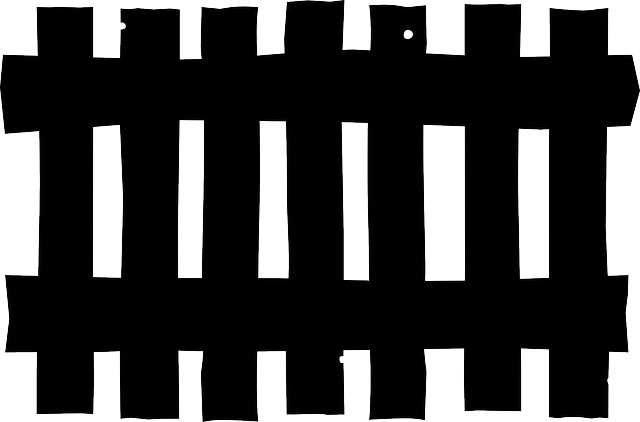In New Bedford, a well-maintained fence is not just an addition to your property but a crucial element of its overall aesthetics and security. This article delves into the essential aspects of fence repair and installation, catering to both homeowners and property managers. We explore common damage patterns specific to New Bedford’s climate and terrain, guide you through selecting durable fencing materials, offer step-by-step installation instructions from industry experts, share efficient repair techniques, and highlight the significant advantages of investing in quality fences for enhanced curb appeal, privacy, and safety.
- Understanding Common Fence Damage in New Bedford
- Choosing the Right Fencing Material for Your Property
- Expert Fence Installation: A Step-by-Step Guide
- Efficient Fence Repair Techniques and Tips
- Top Benefits of Investing in Quality Fences
Understanding Common Fence Damage in New Bedford
Fences in New Bedford, like anywhere, are subjected to various forms of damage over time due to weather conditions, wear and tear, and environmental factors. Common issues include rot or decay in wooden fences caused by excessive moisture and exposure to elements. This is especially prevalent in regions with high humidity and frequent rainfall. Additionally, strong winds and storms can lead to broken or bent fence posts, while falling trees or branches during severe weather events might cause significant damage.
Another frequent problem is damaged or missing pickets, which can result from animal activity, vehicle collisions, or simply aging. Metal fences are susceptible to rust and corrosion, particularly if not properly maintained. Poor installation techniques, such as inadequate post-hole filling or improper spacing, can also contribute to fence instability and eventual failure. Identifying these common issues is crucial for homeowners and property managers in New Bedford to ensure prompt repair or replacement, maintaining the overall integrity and aesthetic appeal of their fences.
Choosing the Right Fencing Material for Your Property
When considering fence repair or installation, selecting the appropriate material is a pivotal decision that can impact both the aesthetics and durability of your property’s barrier. The market offers an array of fencing options, each with its unique qualities, making it essential to evaluate factors like climate, desired visual appeal, maintenance requirements, and budget before making a choice. For instance, wood provides a classic, natural look but demands regular treatment against rot and pests. Vinyl is low-maintenance and versatile in style, while metal offers strength and longevity, suiting both residential and commercial settings.
Understanding your property’s specific needs and preferences will guide you towards the perfect fencing material. Consider the environment around your space; if prone to extreme weather, durable materials like steel or treated wood might be preferable. Alternatively, a more aesthetically driven approach could lead you to choose ornate iron fences or elegant wooden pickets. Ultimately, aligning your fencing choice with both functionality and personal style will ensure a satisfying result for years to come.
Expert Fence Installation: A Step-by-Step Guide
When it comes to fence installation, expertise is key to ensuring a sturdy and aesthetically pleasing structure. Here’s a simplified guide for the process:
1. Planning: Start by assessing your property and deciding on the type of fence best suited to your needs. Consider factors like material (wood, vinyl, chain-link), height, design, and where it will be placed. Obtain any necessary permits from local authorities.
2. Preparation: Clear the installation area of debris and vegetation. Mark out the perimeter of the fence using string or spray paint. Dig post holes at the marked locations, ensuring they are deep enough to support the fence’s weight. Add gravel or sand to the bottom of the holes for better drainage.
Efficient Fence Repair Techniques and Tips
When it comes to fence repair, efficiency is key to saving time and money. Start by inspecting the entire length of the fence for damaged or loose posts, boards, or rails. Address any issues with replacement parts promptly to prevent further deterioration. For example, if a board is rotten, remove it and replace it with a new one, ensuring a tight fit to maintain structural integrity.
Regular maintenance plays a crucial role in prolonging fence life. Keep an eye out for common problems like loose connections, protruding nails, or splintered surfaces. Regular cleaning and sealing can protect against moisture damage and insect infestations. Consider using pressure-treated wood or vinyl coatings for enhanced durability, reducing the need for frequent repairs and ensuring your fence remains a functional and aesthetically pleasing addition to your property.
Top Benefits of Investing in Quality Fences
Investing in quality fences offers numerous advantages for homeowners and businesses alike. One of the primary benefits is enhanced security. A robust fence acts as a physical barrier, deterring intruders and protecting your property from potential threats. It provides peace of mind by creating a secure outdoor space, especially if you have children or pets who can play safely within designated boundaries.
Additionally, fences contribute to improved aesthetics and property value. Well-designed and maintained fences can enhance the curb appeal of your home or business premises. They add structure and definition to outdoor spaces, creating a visually appealing landscape. Whether it’s a classic wooden fence or a modern metal design, a quality fence becomes a striking feature that complements surrounding architecture and increases the overall desirability of your property.
